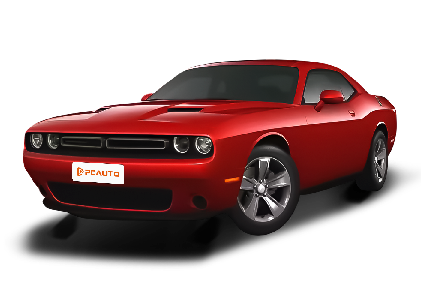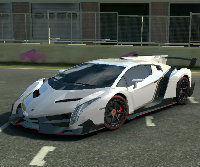Q
Is the Dodge Challenger a fast car?
The Dodge Challenger is truly a powerful American muscle car, with particularly outstanding acceleration performance. For example, the Hellcat version equipped with a 6.2-liter supercharged Hemi V8 engine can produce up to 717 horsepower. It can accelerate from 0-100 km/h in just about 3.6 seconds, and its top speed exceeds 320 km/h. Such performance is among the top-notch in its class in the Malaysian market. However, it should be noted that for these high-performance versions, special tuning may be required in the local area due to right-hand drive conversions and the hot climate to maintain stability.
The straight-line acceleration ability of the Challenger comes from the traditional American large-displacement engine design, which forms a sharp contrast with the European performance cars that focus on cornering handling. It is very attractive to car enthusiasts who enjoy the thrill of straight-line sprints. However, its wide-body design and relatively high fuel consumption may be considerations in the context of Malaysia's narrow roads and fuel prices.
Other similar performance cars in Malaysia include the Ford Mustang GT and the Chevrolet Camaro SS. Consumers can choose different-style models according to their preferences. It is recommended that potential buyers take a test drive to experience the actual performance and consult professional modification workshops for advice on adaptability adjustments in the tropical climate.
Special Disclaimer: This content is published by users and does not represent the views or position of PCauto.
Related Q&A
Q
How much horsepower does a 2023 Challenger GT have?
The 2023 Dodge Challenger GT is powered by a 3.6-liter Pentastar V6 naturally aspirated engine, with a maximum horsepower of 303 hp and a peak torque of 358 Nm. It's paired with an 8-speed automatic transmission and comes with rear-wheel drive or an optional all-wheel drive system. This model is a relatively niche but performance - stable American muscle car in the Malaysian market, suitable for car owners who love a unique style.
It's worth mentioning that although the Challenger GT is positioned lower than the higher - performance R/T or Hellcat versions, its V6 engine offers a more balanced performance in terms of fuel economy and daily driving comfort, while still retaining the classic American muscle car exterior design.
For Malaysian consumers, the after - sales maintenance of this car may need to be carried out through import car franchises, and the parts supply cycle is relatively long. However, its overall reliability is quite good among similar models. If you have higher performance requirements, you can also consider other high - performance versions of the Dodge Challenger series, but the price and maintenance costs will increase significantly.
Q
How fast is the 2023 Dodge Challenger GT?
The 2023 Dodge Challenger GT is a rear-wheel-drive/all-wheel-drive muscle car that combines performance and practicality. Its 3.6-liter Pentastar V6 naturally aspirated engine can produce 303 horsepower and 268 lb-ft of torque. Paired with an 8-speed automatic transmission, it can accelerate from 0 to 100 km/h in about 6 seconds, and its top speed is electronically limited to around 250 km/h.
This car is quite rare in the Malaysian market. However, its all-weather all-wheel-drive system (optional) is especially suitable for the local rainy climate. It's easier to handle on wet roads than the standard rear-wheel-drive version. It's worth noting that although the Challenger GT isn't as powerful as high-performance versions like the Hellcat, the V6 engine offers better fuel economy for daily use. It consumes about 12 - 13 liters per 100 km in the city and can drop to 8 - 9 liters on the highway.
The characteristics of Dodge muscle cars, such as the retro exterior design, wide-body (in some versions), and customization options (like 20-inch wheels/performance exhaust) are all retained, and the maintenance cost is relatively lower compared to the V8 versions. If you're considering importing it, you also need to pay attention to Malaysia's AP import permit and the up-to-105% displacement tax (for engines above 3.0L), which may make the on-road price significantly higher than that in the US market.
In the same class, you can refer to the Ford Mustang EcoBoost (2.3T) or the Toyota Supra 2.0T. However, the Challenger GT's all-wheel-drive system and its American muscle car DNA remain unique selling points.
Q
How many cylinders does a 2023 Dodge Challenger GT have?
The 2023 Dodge Challenger GT is powered by a 3.6-liter Pentastar V6 naturally aspirated engine. It's a 6-cylinder engine with a V-shaped layout. The maximum power can reach 305 horsepower, and the peak torque is 365 N·m. It's paired with an 8-speed automatic transmission and offers rear-wheel drive or all-wheel drive options. This engine is well - known for its smoothness and reliability, making it suitable for daily driving and mild performance needs. Also, its fuel economy is more friendly compared to the V8 version.
For Malaysian consumers, the V6 engine of the Challenger GT strikes a good balance between power and fuel consumption. Coupled with its classic muscle car appearance, it's a choice that combines individuality and practicality. It's worth mentioning that the Dodge Challenger series also has higher - performance V8 versions like the R/T, Scat Pack, and Hellcat, which are equipped with 5.7 - liter, 6.4 - liter, and 6.2 - liter supercharged V8 engines respectively to meet the needs of different performance enthusiasts. However, the GT version is more suitable for the road conditions and fuel price environment in Malaysia.
Q
Is the 2023 Dodge Challenger GT V6 or V8?
The 2023 Dodge Challenger GT available in the Malaysian market comes with a V6 engine. It is equipped with a 3.6 - liter Pentastar V6 engine that delivers a maximum power of 305 horsepower. It's paired with an 8 - speed automatic transmission and offers either rear - wheel drive or an optional four - wheel drive system. This model focuses on balancing a sporty exterior with everyday practicality, meeting the Malaysian consumers' dual needs for performance and fuel economy.
It's worth noting that the V8 versions in the Challenger lineup (such as the 5.7 - liter Hemi V8 or the higher - performance 6.4 - liter Scat Pack) usually come in R/T or SRT models. As a version more suitable for daily driving, the GT is only equipped with a V6 engine. For Malaysian car enthusiasts, the V6 version has advantages in terms of maintenance costs and fuel adaptability. Its heat dissipation efficiency has also been specifically optimized for the local hot climate. Meanwhile, the car retains the classic muscle - car styling elements of the Challenger, like the dual - exhaust design and sport suspension tuning.
If you're after more power, you can look into the parallel - imported V8 versions. However, you need to consider the higher road tax and fuel adaptability issues. The Dodge brand caters to diverse needs through different power configurations, and the V6 GT version has significant cost - performance advantages in the Southeast Asian market.
Q
How big is the gas tank on a 2023 Challenger GT?
The fuel tank capacity of the 2023 Dodge Challenger GT is 72 liters. This design can meet the needs of daily driving and long - distance travel, taking into account both fuel economy and range. For users in Malaysia, this capacity can provide a cruising range of approximately 500 - 600 kilometers under common local driving conditions (such as city commuting or interstate highway driving). The specific value is affected by driving habits and road conditions. It's worth mentioning that the Challenger GT, as a rear - wheel drive/all - wheel drive switchable vehicle that combines performance and practicality, has a fuel tank volume that matches the energy consumption performance of its 3.6 - liter Pentastar V6 engine. This engine runs stably under the RON95 gasoline standard in Malaysia. If the owner plans a long - distance drive, it is recommended to regularly check the tire pressure and oil condition to optimize fuel efficiency. Also, in Malaysia's hot climate, the frequency of cooling system maintenance can be appropriately increased. Among muscle cars in the same class, the fuel tank of the Ford Mustang is about 61 liters, while that of the Chevrolet Camaro is 72 liters. It can be seen that the Challenger GT's range performance is at a mainstream level and is suitable for the diverse road conditions in Malaysia.
Q
Is the 2023 Dodge Challenger GT AWD?
The 2023 Dodge Challenger GT does offer an all - wheel - drive (AWD) version. This model is equipped with a 3.6 - liter Pentastar V6 engine, with a maximum power of 303 horsepower. It is paired with an 8 - speed automatic transmission. The AWD system can automatically distribute torque between the front and rear axles according to road conditions, enhancing handling stability on slippery or complex roads, which is especially suitable for Malaysia's rainy climate.
It's worth noting that the AWD system of the Challenger GT uses a rear - wheel - drive bias setting. During normal driving, 100% of the power is output to the rear wheels to maintain its sporty characteristics. Only when wheel slippage is detected will up to 50% of the power be sent to the front axle, balancing fuel economy and driving pleasure.
As an American muscle car, while the Challenger GT retains classic design elements, the AWD version has increased its daily practicality through suspension tuning. Its 20 - inch wheels paired with all - season tires also meet the road condition requirements in Southeast Asia.
Although Japanese cars dominate the Malaysian market, American performance cars of this kind still attract consumers who pursue individuality with their unique style and adaptable driving technologies. However, one should be aware of the relatively high maintenance costs due to their imported - car status.
Q
What is the top speed of the 2023 Challenger GT?
The top speed of the 2023 Dodge Challenger GT is approximately 250 kilometers per hour. This model is equipped with a 3.6-liter V6 naturally aspirated engine, boasting a maximum output power of 305 horsepower. Paired with an 8-speed automatic transmission, it offers a smooth and powerful performance, which meets the driving requirements on Malaysian highways. As a classic American muscle car, the Challenger GT not only has excellent performance but also takes daily practicality into account. Its all-wheel-drive system provides better handling stability in Malaysia's rainy climate. It's worth mentioning that although the acceleration performance of the Challenger GT is slightly inferior to that of the V8-powered Scat Pack or Hellcat, its fuel economy and practicality are more suitable for daily driving. Moreover, it retains the iconic retro exterior design of Dodge muscle cars, such as the square body lines and round headlights, which look extremely unique on Malaysian streets. For Malaysian consumers who love American muscle cars but don't need extreme performance, the Challenger GT is a great choice that balances performance and practicality.
Q
How much is a 2023 Challenger GT trade-in value?
The used car trade-in value of the 2023 Challenger GT will be affected by the vehicle's condition, mileage, configuration, and the local market demand in Malaysia. Generally, the estimated used car value of this model is around RM150,000 to RM200,000. It is recommended to get a specific price assessment through local authorized dealers or professional used car platforms.
As an American muscle car that combines performance and comfort, the Challenger GT is equipped with a 3.6-liter V6 engine and an all - wheel drive system. It's a relatively niche model in the Malaysian market but has a stable group of enthusiasts. Therefore, well - maintained vehicles will have a higher resale value.
In addition, the used car market in Malaysia pays special attention to the maintenance records and the integrity of original parts for imported cars. It is recommended that car owners keep complete maintenance records to increase the trade - in value. If you're considering a trade - in, you can also learn about the market conditions of similar models such as the Ford Mustang or Chevrolet Camaro in advance to gain more initiative in the negotiation. At the same time, be sure to choose a reputable used car dealer or an official channel to ensure a safe transaction.
Q
What engine is in a 2023 Challenger GT?
The 2023 Dodge Challenger GT is equipped with a 3.6-liter Pentastar V6 naturally aspirated engine. It can reach a maximum power of 305 horsepower and a peak torque of 364 N·m. It's paired with an 8-speed automatic transmission, and comes standard with rear-wheel drive or an optional all-wheel drive system. This engine is well - known for its smoothness and reliability, making it suitable for daily driving and occasional performance needs.
For Malaysian consumers, the V6 engine of the Challenger GT strikes a good balance between fuel economy and power performance. Moreover, it can adapt to the local climate and road conditions. The all - wheel drive version also provides better stability on slippery roads during the rainy season.
It's worth mentioning that the Pentastar series of engines are widely used in many models of the Chrysler Group. They have mature technology and are easy to repair. Malaysian authorized service centers can also offer comprehensive maintenance support.
If you're after more power, you can consider the 5.7 - liter Hemi V8 version of the Challenger R/T. However, the V6 engine of the GT version can already meet most driving scenarios and is more in line with the considerations of the displacement tax system in the Malaysian market.
Q
Is a Dodge Charger good for traveling?
The Dodge Charger, a classic American muscle car, needs to be evaluated in the context of Malaysia's driving environment when it comes to its performance on long-distance trips. Its spacious cabin and relatively large trunk space (about 370 liters) are suitable for family outings. The abundant power provided by the V6 or V8 engines can handle high-speed cruising. However, it should be noted that the fuel economy of the 3.6-liter Pentastar V6 engine (about 11-12L/100km in the city) under Malaysia's fuel prices may be higher than that of Japanese models in the same class.
The chassis tuning is more sport-oriented, which may affect comfort on some road surfaces in Malaysia. And the rear-wheel-drive (RWD) layout requires cautious driving during the rainy season. It's worth mentioning that in Malaysia's hot climate, the cooling efficiency of its standard-equipped air-conditioning system and optional features such as seat ventilation deserve attention. At the same time, be aware that the peculiarity of the right-hand-drive version may affect maintenance convenience. If you often travel between Singapore, Malaysia, and Thailand, you also need to consider the differences in the supply of parts for American-spec cars among ASEAN countries.
Overall, the Charger is suitable for long-distance travelers who pursue driving pleasure, but you need to weigh the usage cost and local adaptability.
Latest Q&A
Q
How many miles per gallon does a 2021 Mitsubishi get?
Mitsubishi's fuel efficiency in 2021 varies by model and powertrain. Take the Outlander, for example – the 2.4L four-cylinder front-wheel-drive version gets around 25 mpg combined (about 10.6 km/L). The plug-in hybrid (PHEV) model, on the other hand, delivers better efficiency in all-electric mode, though actual numbers depend on driving conditions and battery state. For Malaysian buyers, fuel economy is also affected by local road conditions, driving habits, and fuel quality. It’s best to check Mitsubishi Malaysia’s official localized data or real owner reviews for the most accurate info. With hybrids and EVs gaining traction globally, if you’re thinking about long-term running costs, keep an eye on Mitsubishi’s new energy tech – stuff like the PHEV system’s regenerative braking and all-electric range, which can really cut down on fuel use for city commutes. When picking a model, make sure to factor in your daily driving distance and how easy it is to access charging stations.
Q
What kind of engine is in the 2021 Triton GSR?
The 2021 Mitsubishi Triton GSR is powered by a 2.4-liter MIVEC turbocharged diesel engine, which features Mitsubishi's advanced common-rail direct injection technology and a variable geometry turbocharger. It cranks out 181 horsepower and a peak torque of 430 Nm, mated to a 6-speed automatic transmission, delivering strong performance and impressive fuel efficiency. It's perfectly suited for Malaysia's diverse road conditions, handling both city driving and off-road adventures with ease. This engine also meets Euro 5 emission standards, showcasing Mitsubishi's commitment to eco-friendly technology. For Malaysian consumers, the Triton GSR's engine isn't just powerful; it's also highly durable and relatively low-maintenance, making it a standout in Mitsubishi's pickup truck lineup. What's more, the turbo diesel engine provides high torque at low revs, making the vehicle particularly capable when hauling loads or towing, ideal for users who need frequent transportation or enjoy outdoor activities.
Q
What is the fuel consumption of the Mitsubishi Triton 2021?
The fuel consumption of the 2021 Mitsubishi Triton varies depending on the drive type and transmission configuration. According to official figures, models equipped with the 2.4-liter turbocharged diesel engine (with MIVEC technology) have an average fuel consumption of approximately 7.6 liters per 100 kilometers for the manual transmission version, and around 8.0 liters per 100 kilometers for the automatic transmission version. Four-wheel drive models have slightly higher fuel consumption due to additional mechanical losses, but overall, it remains one of the more fuel-efficient pickups in its class. This engine's ability to deliver high torque at low revs makes it well-suited for Malaysia's hilly terrain and cargo-carrying needs, while its ECO driving mode further optimizes fuel efficiency. It's worth noting that actual fuel consumption can be affected by driving habits, road conditions, and load. It's recommended that owners perform regular maintenance, such as cleaning the air filter and changing the oil promptly, to maintain optimal fuel efficiency. For Malaysian users who frequently drive long distances or need a vehicle that balances family and commercial use, the Triton's balanced fuel economy and reliability make it a solid choice. Other models in the same class with similar performance include the Toyota Hilux and Ford Ranger, though each has slightly different tuning priorities.
Q
How much can a 2021 Mitsubishi Triton tow?
The 2021 Mitsubishi Triton offers a maximum towing capacity of 3.1 tonnes (3100kg) in the Malaysian market. This figure applies to the automatic transmission models equipped with the 2.4-liter turbocharged diesel engine, which cranks out 181 horsepower and 430 Nm of torque—plenty of muscle to handle towing needs. It’s important to note that actual towing performance depends on factors like trailer type, load distribution, and road conditions. Owners should always consult the vehicle manual before hauling heavy loads and ensure the towing setup is properly installed.
Underpinning the Triton is a chassis built with high-strength steel and a reinforced suspension system, both working to boost towing stability. The standard trailer stability control system also helps minimize trailer sway during driving, adding an extra layer of safety. For those who tow regularly, keeping an eye on transmission oil temperature, brake system condition, and tire wear is crucial—these small checks go a long way in extending vehicle life and ensuring safe journeys. Malaysia’s hilly terrain and humid climate can affect towing performance, so it’s wise to reduce speed slightly and take more frequent breaks during long trips or when carrying heavy loads to prevent engine overheating.
Q
How big is the 2021 Triton?
The 2021 Mitsubishi Triton, a popular pickup truck in the Malaysian market, measures 5305mm in length, 1815mm in width, and 1780mm in height, with a wheelbase of 3000mm. This size ensures ample passenger space and excellent cargo capacity, with the truck bed sized at 1520mm long, 1470mm wide, and 475mm high – perfect for daily hauling and outdoor adventures. In Malaysia, it's favored for its durability and off-road performance, handling the country's varied road conditions and climate like a champ. The Triton comes with an advanced 4WD system and multiple driving modes, making light work of tricky terrains. Inside, the focus is on practicality and comfort, featuring a multifunction steering wheel and touchscreen infotainment system to up the driving experience. For Malaysian buyers, the Triton isn't just a workhorse; it's also a solid choice for family getaways. Its reliability and versatility keep it competitive in its class.
View More


















Pros
Cons